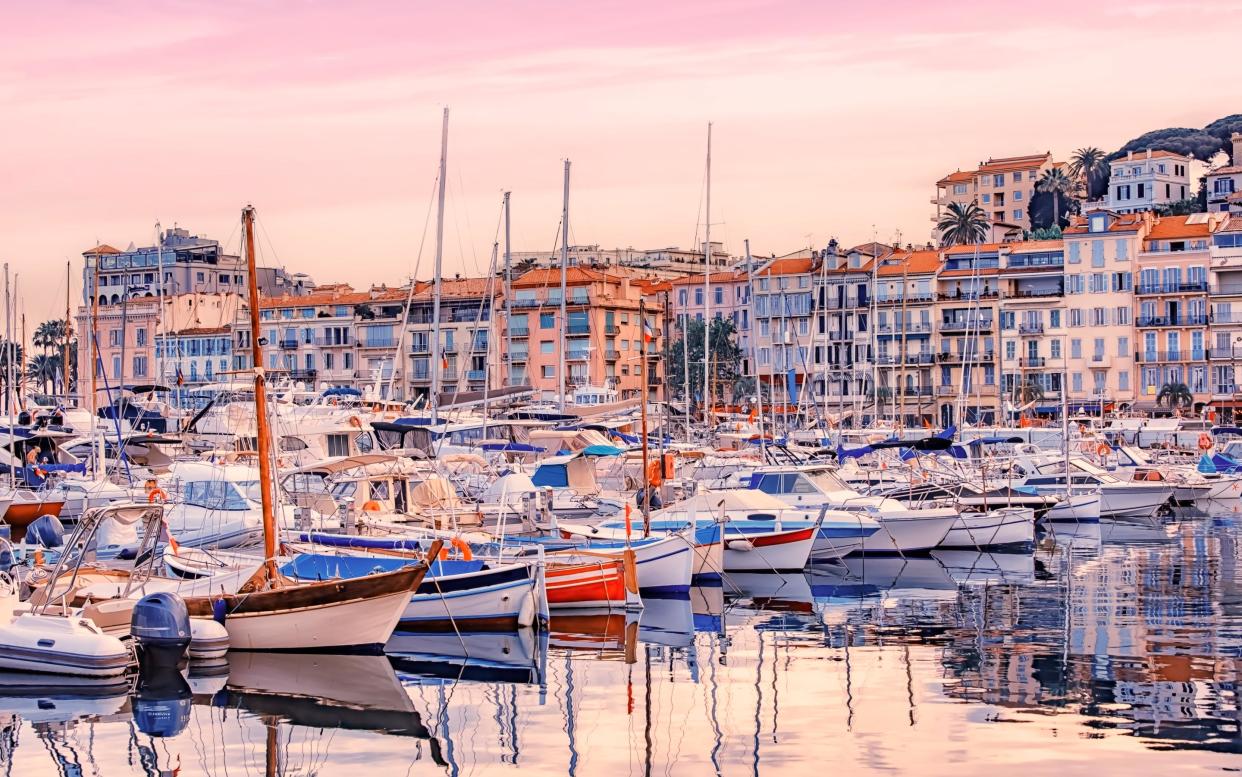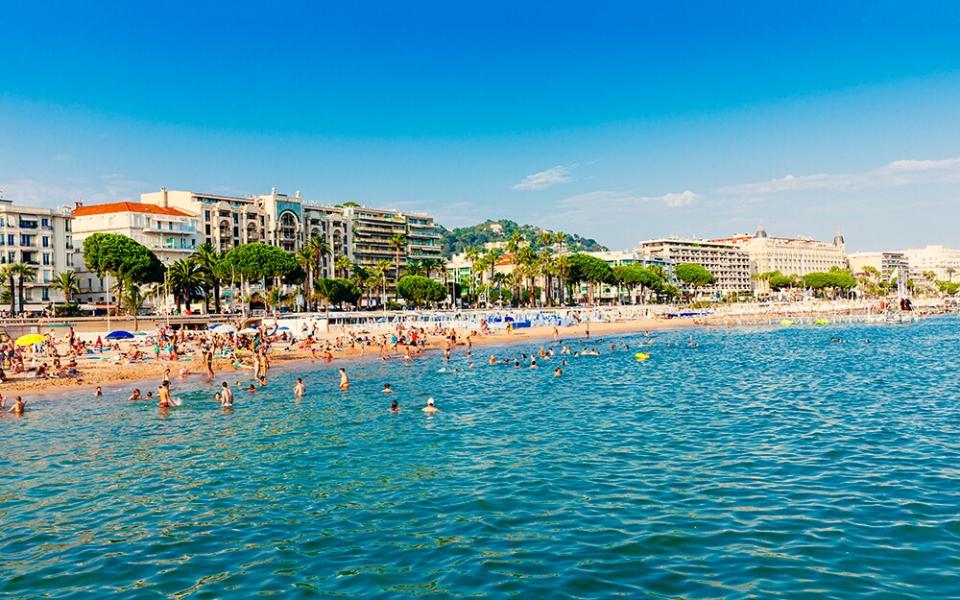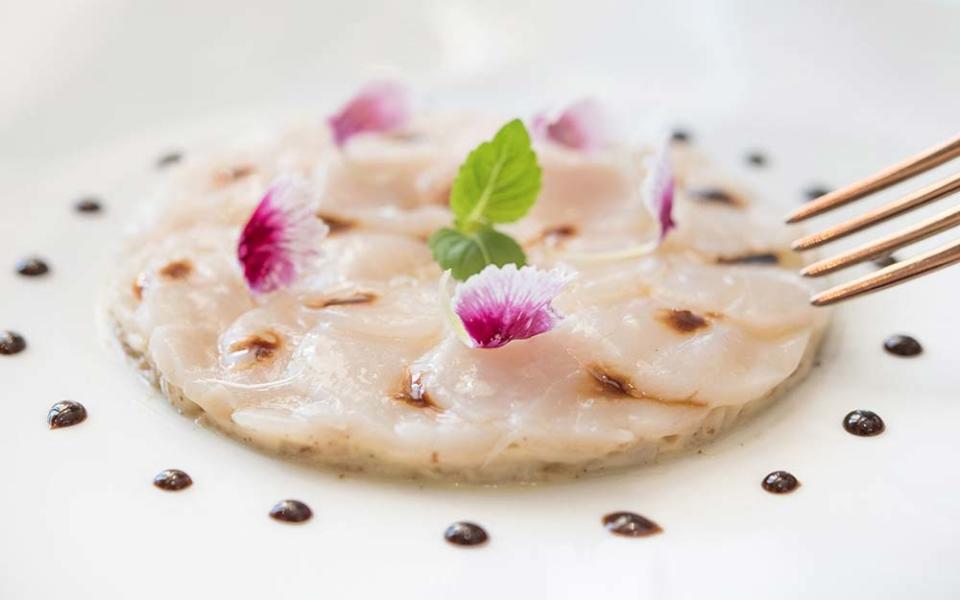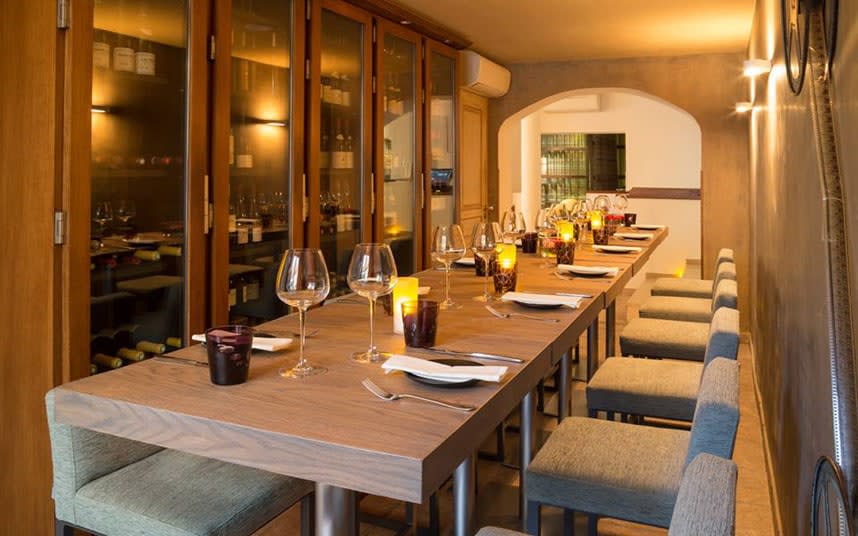How to spend a glamorous weekend in Cannes – the star of the French Riviera

Granted, it’s much smaller than Nice, but Cannes positively gleams on the surface. In fact, there are few city promenades more dazzling than La Croisette. Since British aristocrats rolled in to what was then a tiny fishing village in the 1830s, the place has been fashioning itself in the image of the fashionable. More recently, its real achievement has been to spin out across the whole year the sparkle generated by the world’s most notable film festival.
Of course, the bay is glorious and there are sandy beaches – but what sets Cannes apart is the shiny veneer with which it has coated these elements. Thus is the international-class collection of palace hotels kept turning over happily. The ambitious boutiques, too. And so the story of a modest little town in the South of France continues to hold the world’s attention.
For further Cannes inspiration, see our guides to the city's best hotels, restaurants, nightlife and things to do. For more inspiration read our guide to spending a week on the French Riviera.
In this guide
How to spend your weekend
Day one
Morning
Start on the great, curving Croisette promenade, as the early sun spangles the sea. Walk right to the Pointe-de-la-Croisette headland. The little cross (“croisette”) protecting sailors setting out to sea – whence the name of the prom – has now been replaced by a casino: that’s contemporary Cannes in a nutshell.
Stroll back, in front of the grand palace hotels lined up like grandees, and the big-name boutiques. Appreciate the Croisette spectacle of beautiful youth, handsome families, joggers and the rest of us. The Croisette itself, broad and engulfed in greenery, runs to the Palais des Festivals, HQ of the May film thrash.
Note the handprints of movie stars in stainless steel down the side of the building, then lunch – on, say, redfish fillet or pork in ginger – at the Bistro Gourmand; a three-course lunch here is €33 (£29). Inside, recent top-to-bottom refurbishment has given the venerable spot a contemporary aspect. Outside, beyond the French windows, you’ll find a little pavement terrace. A new owner took over in November 2023, but the style remains resolutely the same.

Afternoon
Continue to Suquet Hill where working people stacked up steep, in sinuous streetlets and stairways, when Cannes’ main business was fishing. The labyrinth survives, now colonised by bars, restaurants and shops selling inessentials.
At the top of the hill, you'll find the 11th-century castle, which once belonged to the monks of Lérins . Now it’s the Musée Des Explorations du Monde (known, until 2023, as the Musée de la Castre) which does what it promises, exploring world cultures from primitive art to orientalism, via the Himalayas, the Arctic, pre-Columbian America and a fine section on Iran. Look out for, among much else, musical instruments, landscape paintings and a shaman’s belt whose chimes “connected the costume to the entire universe”. The castle tower affords startling views.
Then nip to the Croix-de-Garde hill where ex-Lord Chancellor of Britain, Lord Brougham, the first British noble to end up in Cannes (in 1834) built his Villa Eleonore. This was the initial step in Cannes’ ascent to world-glam status. The villa’s still there – at number 24 Avenue Dr Picaud – and, though now in flats on a private development, it retains trace elements of 19th-century dignity. It’s a key part of Riviera history – and all the evidence we need that the English effectively created the Côte-d’Azur.

Late
Dine in Americano-Japanese style at the brand new Mr Nakamoto restaurant within what used to be Le Grand Hotel Cannes and which, since early in 2023, has been operating under Accor’s Hotel Mondrian brand name. Expect US grill dining with a Japanese accent, martinis, much sushi and light cooking full of invention. Mains like grilled salmon are from €28/£24.30. The view from here is delightful, looking out across the vast hotel gardens and greensward to the sea. The view from here is delightful, looking out across the vast hotel gardens and greensward to the sea. For more suggestions of the best restaurants in the area, see our guide.
Later totter across to the Casino La Croisette within the Palais des Festivals, and lose whatever money you have left.

Day two
Morning
Bob along the main Rue-d’Antibes where, where reasonable retailing gathers, to Forville Market. Pick up the makings of a picnic, then go to the port’s Quai Laubeuf to catch a ferry to one of the two Ile de Lérins, which are 15 minutes away. Unfortunately, you cannot take a round trip to both islands. If you want to go from Ile St Honorat to Ile Ste Marguérite, or vice versa, you must return to Cannes and start again.
Ile St Honorat is colonised by Cistercians, for prayer and the production of scandalously expensive wines and spirits. Despite the fortified monastery at St Honorat’s tip, I’d choose Ste Marguérite, the larger of the two islands and rich with pine and eucalyptus aromas (trans-cote-azur.com; return ferry £15).
Upon disembarking, make for the island’s Fort Royal. Like most French coastal forts, this wasn’t much use for defence but proved an admirable prison, notably for the Man In The Iron Mask. He was locked up there for 10 years from 1687, as were Protestant pastors during France’s wars of religion. Cells have been preserved, and prove more fascinating than the adjacent Maritime Museum, though, if you’re passionate about marine archaeology, you may disagree.

Afternoon
Next, take your time wandering the forest and rocky edges of the island. It’s easy: Ile Ste Marguérite is just two miles long by half a mile across. So it’s more of a park stroll than a country hike. Settle in one of the mini-coves for the picnic.
Then relax, swim and snooze a while before taking the ferry back to Cannes. There you can do more of the same or, if the weather isn't too warm, simply amble. Avoid the private beaches, and head for the Plage du Midi – the other side of the port from Cannes centre – where there are great expanses of public stretches of sand and fewer people.
Late
Trot to Suquet hill, and more specifically to Table 22 by Mantel. In a heavily touristed district, this is the real deal: simple, brilliantly worked sophistication with a Mediterranean accent. The fillet of cod with arrabiata tomato sauce is particularly toothsome, as is the roasted rack of lamb with thyme – and the lemon tart a triumph of the genre. Mains from €28 / £24. Dinner only.
Continue the evening nearby at Charly’s Wine Bar at 3 Rue Suquet. It’s cool but less hectically glam than establishments nearer the Croisette and, unusually, is open on Sunday evenings, to 2:30am. For more suggestions of the best nightlife in the area, see our guide.

Insider tips
City hack
Stop off at the tourist office to pick up one of the Murs Peints de Cannes leaflets, which will guide you round the city’s extraordinary collection of film-related murals. You'll spy everyone from Gérard Philipe to Marilyn Monroe as you make your way round.
Attractions
You really want to get to grips with the town? Contact a local for a free guided tour via Cannes Greeters. He or she will take you round parts of Cannes you might otherwise miss, parts which maybe mean something to him or her but don’t get into the guidebooks. It’s the ultimate insider’s tour.
Neighbourhood watch
Unsure where to head for of an evening? Hip bars and affordable restaurants cluster around the Rue Commandant André, just off La Croisette. Try Bobo Bistro for bright contemporary eating.
Hotels
Admirable and elegant in every way, the Hotel Cavendish invites guests for free aperitifs between 6.30pm and 8.30pm every evening. The four top-end Rotunda rooms are a particular treat – round, as you might have guessed, with real parquet floors, fine little terraces and big beds in the middle of the room.
When to go
It wasn’t until the 1920s that 'the season' on the French Riviera, including in Cannes, began to switch from winter to summer. Prior to that, the great, good and wealthy had repaired there from autumn onwards, to escape the dismal climes of northern Europe. They then left in summer, for the sun was deemed too searing and bright for fair skins. These days, of course, it’s the other way round.
If you want to be in Cannes when things are really buzzing, the beaches are packed like platters of canapés, prices are at their highest but nightlife and clubs swing through till dawn, then high summer is the time for you.
Cannes is only slightly less warm, but much less crowded in the shoulder months of May, June, September and October. Most things are open, too, and the pace pleasantly less frenzied (though please see below for the dangers of visiting during the May film fest).
Winter, too, still has its advocates. Walking the Croisette on a January morning, sun and sky as clear as can be, light sparkling the Med and the prospect of lunch on a restaurant terrace in the offing – it’s really not bad at all.
Do note that during the annual film festival crowds are hellish, security – both police and private – is ubiquitous, and you’re not going to get into any of the top-level hotels, clubs or – least of all – private parties. The best you can hope for is a glimpse of the back of someone famous as he or she climbs the red carpet up the Palais du Festival steps. Stay away. Go the following week, when everyone will be pleased to see you.
Where to stay
Luxury Living
Re-opened – and re-branded – in spring 2023 after a two-year, £305 million refurb, the Carlton (now under the Regent brand) is even more outrageously luxurious than heretofore. Two new wings have added 20,000 square metres floor space, and 37 ‘residences’ – for longer stays – round a courtyard and gardens boasting an infinity pool. The hotel’s original 332 rooms have been upgraded, the public spaces lightened without losing touch with a stylish story-filled past. Princess Grace and Prince Rainier – who met here in 1955 – would still recognise the hotel. The Belle Epoque façade, with domes at either end, has, for instance, been refreshed but not changed. To the bistronomic Riviera Restaurant has been added the Rüya, the Côte-d’Azur’s first Anatolian restaurant. Bar 58 and the Carlton Beach Club remain the spots to discuss movie deals.
Doubles from £295.
Boutique Beauty
Hotel America is a colourful four-star hotel in Cannes with charming multi-lingual staff and good breakfasts, in a central location near La Croisette. The place has a civilised, Old South town-house feel, with restrained colours and elements of elegance. This is, in short, a very satisfying refuge from the sometimes hectic state of affairs obtaining in Cannes itself.
Doubles from £71.

Budget Bolthole
Smart folk who want to stay in the same district as the great palace hotels – but pay less for a double room than a couple of starters in the gastronomic restaurants – opt for the three-star Le Mistral. Throughout, there is evidence of imagination and attention to detail, with bracing splashes of art and nuances of colour.
Doubles from £63.

What to bring home
The finest French Med paste for apéritif biscuits or vegetable dips is tapenade – olives, capers, olive oil, garlic and maybe anchovies crushed to a spreadable consistency. There’s no equivalent for accompanying a glass of pastis. Get it at Forville Market or any regional food shop.
Know before you go
Essential Information
Cannes is covered by the British Consulate in Marseille (00 33 491 15 72 10; Les Docks de Marseille, Atrium 10.3, 1er Etage/1st Floor, 13002 Marseille (00 33 4 91 15 72 10; gov.uk). Open Mon, Wed, Fri, 9.00am-12h30.
British Embassy, Paris: 00 33 144 51 31 00
Emergency services: Dial 112
Cannes Tourist Office: 00 33 492 99 84 22; cannes-france.com/cannes-tourist-office
The basics
Currency: Euro
Telephone code: dial 00 33 if calling from the UK
Time difference: +1 hour
Flight time: London to Nice is around two hours
Local laws and etiquette
French law requires that you always have personal ID about your person, so keep your passport on you.
If driving, you must have a fluorescent yellow bib in the car. It’s to be put on should you break down on a busy road and need to be visible to other motorists – and it’s a legal requirement.
When introduced to someone, shake him or her by the hand. If it comes at all post-Covid, all that cheek-kissing comes a little later (considerably later between men), when acquaintance has been struck up.
Note that, when offered something (a fill-up of your wine glass, more bread, a minor treat), simply saying “Merci” indicates refusal, as in “No, thank you”. This is quite different from British practice, where saying a simple “Thank you” implies acceptance, as in “Yes, thank you”. So, if you want your wine glass filled or more bread, don’t say “Merci”. Say “Oui, s’il vous plait.”
Round-the-clock snacking is far less common in France than in the UK – as is eating or drinking in the street. French practices are loosening, but you’re still unlikely to draw admiring glances if you’re walking along at 4pm with pizza in one hand, a can of beer in the other.
Author bio
For more than 30 years, Cannes expert Anthony Peregrine has perpetuated the double-centennial relationship between noble Britons and the Côte-d’Azur. Few suspect he’s really a prole from Preston, Lancs.


